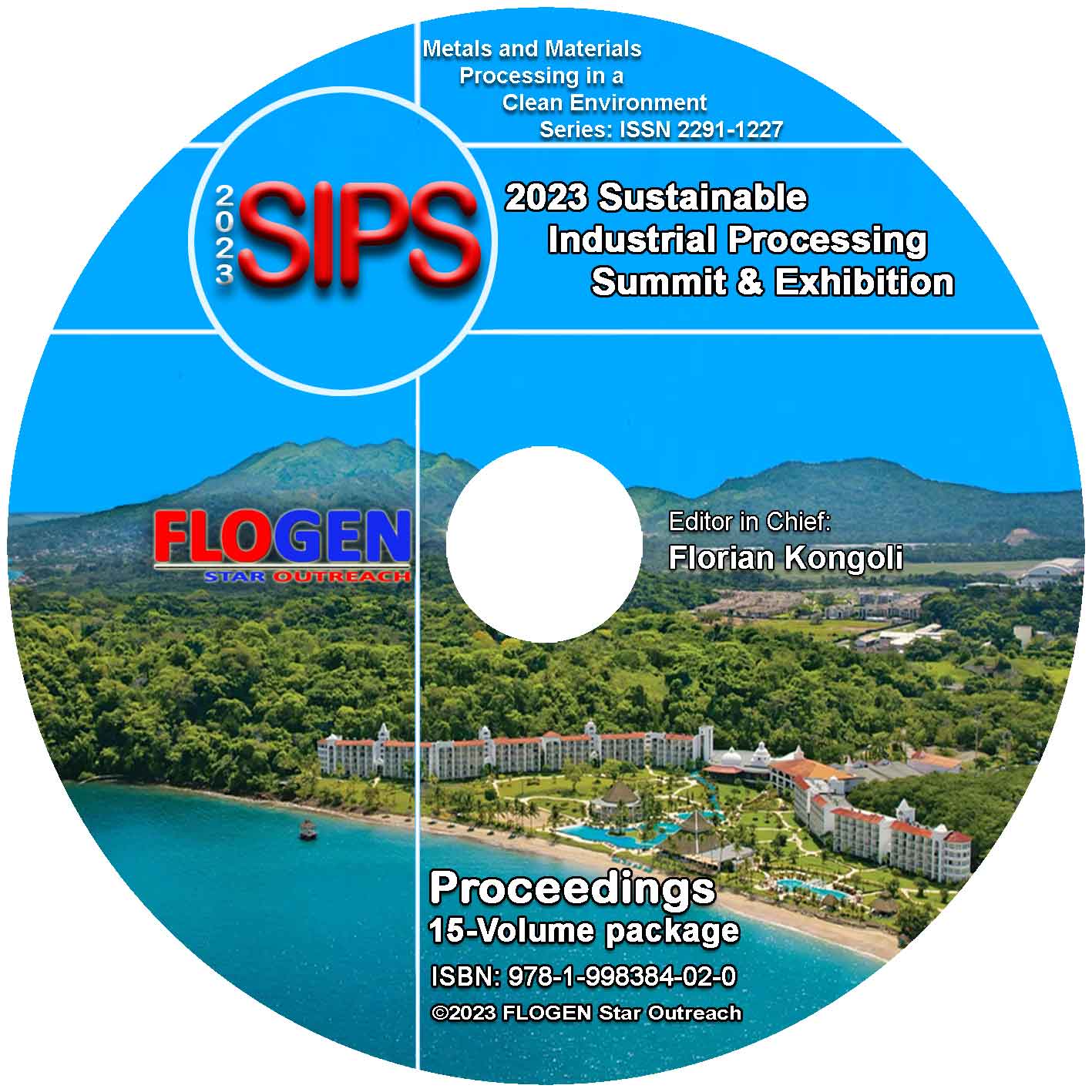2023-Sustainable Industrial Processing Summit
SIPS2023 Volume 4. Echegoyen Intl. Symp / Nanomaterials for Future Energy Demands
| Editors: | F. Kongoli, M.P. Brzezinska, M.A. Alario-Franco, F. Marquis, M.S. Noufal, E.Palomares, J.M. Poblet, D.M. Guldi, A.A. Popov, A.R. Puente Santiago, B. Raveau, D. G. Rodriguez, S. Stevenson, T. Torres, A. Tressaud, M. de Campos |
| Publisher: | Flogen Star OUTREACH |
| Publication date: | 21 December 2023 |
| Pages: | 166 pages |
| ISBN: | 978-1-989820-78-0 (CD) |
| ISSN: | 2291-1227 (Metals and Materials Processing in a Clean Environment Series) |

CD shopping page
REVERSAL OF MAGNETIZATION IN PERMANENT NANOCRYSTALLINE MAGNETS
Marcos de Campos1; Jose Adilson de Castro2;1UFF - FEDERAL FLUMINENSE U., Volta Redonda, Brazil; 2UFF - FEDERAL FLUMINENSE UNIVERSITY, Volta Redonda, Brazil;
Type of Paper: Regular
Id Paper: 293
Topic: 16
Abstract:
Rare-earth permanent magnets have a  broad range of applications, in motors of electric and hybrid cars, in wind turbines, and  in any machine where efficiency is important [1].  Many countries are establishing   rigorous standards for electric motors efficiency, as IE4 and IE5 [1,2].
A rotating machine as an  electric motor has two main components: a rotor and a stator.   In essence, by using  a permanent magnet in the rotor, the efficiency of the machine can be increased. This save an energy that would be used to magnetize the rotor. This also makes possible that the motor can be of the brushless type, thus avoiding friction.
In the electrical motors, the magnets need to present high resistance against reversal of magnetization. The motor heats during the  motor operation.  As consequence, the magnets embedded in the stator also heats. There is much  research on  increasing motor efficiency [3], especially in the case of electric cars, where automony is an important issue, and where batteries are very expensive.
Nanocrystalline magnets display better resistance  against reversal of magnetization. Here this  subject is discussed by considering magnetostatic and  exchange energy terms.  Â
The mechanisms of reversal of magnetization in nanocrystalline permanent magnets are reviewed. Nanocrystalline Rare-earth magnets  can be  used in motors, or also in thin films [4]. Crystallographic texture effects on the coercivity are also discussed [5].
Keywords:
Energy; Industry; NanomaterialsReferences:
[1] https://commission.europa.eu/news/new-eu-rules-boost-energy-efficiency-electric-motors-2021-06-30_en[2] https://eandt.theiet.org/content/articles/2023/03/motoring-into-the-ie5-era-for-energy-efficiency/
[3] https://fox5sandiego.com/automotive/internet-brands/how-lucid-leaps-past-tesla-with-smaller-motors/amp/
[4] https://link.springer.com/article/10.1007/s13204-023-02931-1
[5] https://www.sciencedirect.com/science/article/abs/pii/S0304885322010046